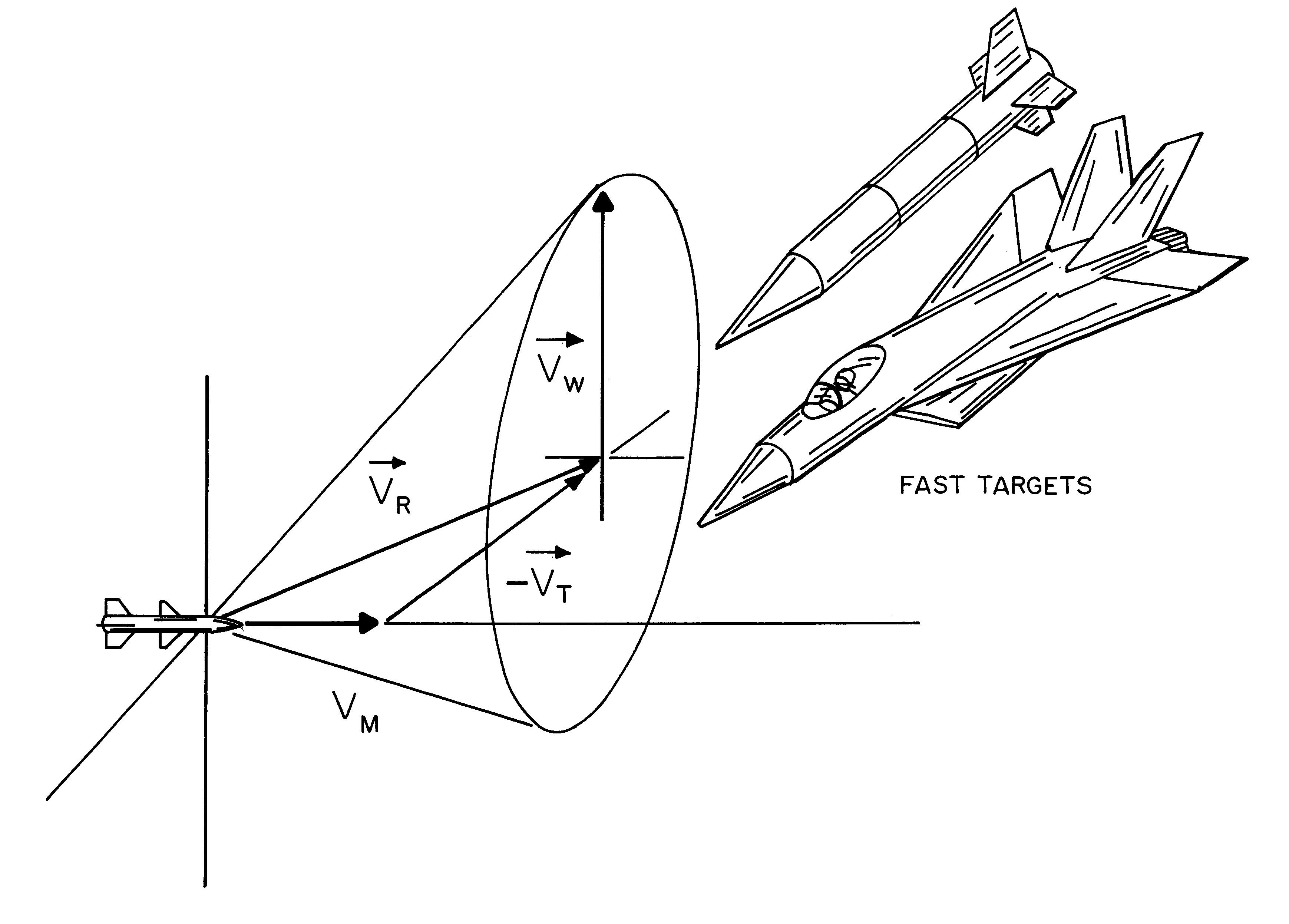Imaging-infrared skewed-cone fuze
a fuze and infrared technology, applied in the field of target fuzing, can solve the problems of cov problem, variable-angle right cone, impracticality of vacuum tube and waveguide antennae,
- Summary
- Abstract
- Description
- Claims
- Application Information
AI Technical Summary
Problems solved by technology
Method used
Image
Examples
Embodiment Construction
The elements of the preferred embodiment shown in FIGS. 4 and 5, depending on the application, are (1) One or two 180-degree fisheye lenses imaging forward and optionally rearward hemispheres; (2) One or two 64-element infrared detector arrays and associated optics (three-degree resolution); (3) A digital microprocessor; (4) An aimable warhead; and (5) Ancillary devices including power supplies, cooling and safety and arming units.
Sensor
Passive infrared is the medium of choice because it offers sufficient range and resolution even in adverse weather, against expected powered and / or high-speed aero-heated targets, at minimal aperture, hardware and energy costs. The optimum infrared frequency band(s) depend upon the application. The usual clutter and countermeasure problems of passive IR are eliminated by image processing.
Given a place in the nose of the carrier, the invention may comprise either a single body-fixed 180-degree fisheye lens, or a single side-mounted lens rolled to the ...
PUM
 Login to View More
Login to View More Abstract
Description
Claims
Application Information
 Login to View More
Login to View More - R&D
- Intellectual Property
- Life Sciences
- Materials
- Tech Scout
- Unparalleled Data Quality
- Higher Quality Content
- 60% Fewer Hallucinations
Browse by: Latest US Patents, China's latest patents, Technical Efficacy Thesaurus, Application Domain, Technology Topic, Popular Technical Reports.
© 2025 PatSnap. All rights reserved.Legal|Privacy policy|Modern Slavery Act Transparency Statement|Sitemap|About US| Contact US: help@patsnap.com



